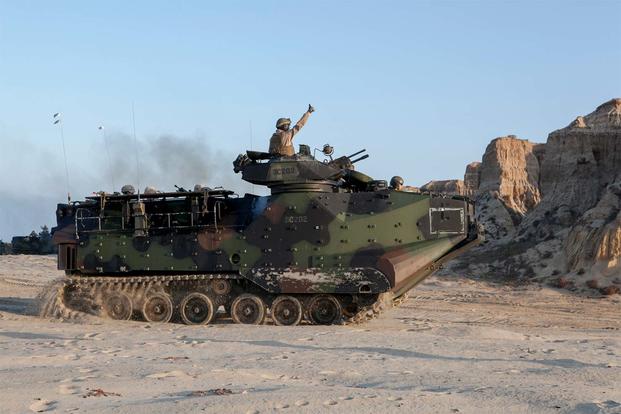The commandant of the Marine Corps wants the service to come up with a strategy to give Marines more time at home between deployments before the end of the year and get new aircraft cranking off production lines ahead of schedule.
Those are two of the 25 time-sensitive tasks for service commanders published Tuesday alongside Gen. Robert Neller's second major message to the force. In the task list, he calls on Marine Corps leadership to invest in people, build up readiness, and take training into the future.
Neller's checklist tasks Marine Corps Forces Command and Manpower and Reserve Affairs with developing a plan to give Marines on average more than twice as much time at home than they spend deployed.
Increasing "dwell time," as it's called, from the current 1:2 ratio has long been cited by Marine Corps commanders as a goal at odds with the service's high deployment tempo and ongoing force reductions. As leaders await approval of a defense budget measure that would modestly increase the size of the force for the first time in years, Neller's order is a signal that times may be changing.
"The optimal deployment-to-dwell ratio will not be the same for all elements of the [Marine air-ground task force] and we must strike the right balance between risk-to-force, risk-to- mission, and risk-to-institution," Neller cautioned in the document. "Potential factors to consider among others: increasing the end strength of the force, growing key Military Occupational Specialties (MOSs), and decreasing in Global Force Management (GFM) demands."
Another goal dependent on budget decisions is the plan to accelerate aviation recovery for the service, which has seen aircraft readiness rates and pilots' flight hours plummet and then begin to recover in the last two years.
In an interview this month in his office at the Pentagon, Neller said the Corps would try to buy new aircraft faster, including F-35B Joint Strike Fighters, to replace aging legacy platforms, and petition Congress to fully fund the service's flight hour program and spare parts requirements so aviation readiness as a whole will improve.
"We're going to be in a position where we're fielding new aircraft and sustaining legacy aircraft for a number of years and it would be nice if the [operational] tempo would go down, but I don't see that happening either. So we've got to do this all on the fly," Neller said. "We've got to improve our readiness and continue to meet our requirements."
Whether or not the extra money rolls in within future defense budgets, Neller is asking aviation leaders to come up with more efficient ways to accelerate the recovery plan.
He's also calling for better training for aviation maintenance Marines, citing recent readiness reviews that highlighted a lack of training and standardization in these fields. By improving and standardizing the training pipeline for specialized aviation maintainers, he wrote, "We can improve overall readiness and performance of Marine Aviation."
In parallel, Neller wants commanders to develop a comprehensive plan by the end of the year to modernize the Marine Corps ground combat element, allowing infantry Marines to fight with similar technological and training advantages to their aviation counterparts.
He reiterated his desire to get quadcopter drones fielded to each Marine rifle squad "immediately," and said he wanted to see ground Marines take advantage of the 5th-generation platforms, sensors and networks that the F-35 Joint Strike Fighter will bring to the force.
Neller endorsed a growing trend in the Marine Corps to tailor equipment and gear to the specific needs of the ground combat Marine.
In 2015, the Corps announced that infantry Marines would use M4s as their standard service rifle, while non-infantrymen would continue to carry the longer M16; and last fall, Marine Corps Systems Command held an event focused on equipping infantry Marines with tailor-made gear specific to their jobs, with leaders even discussing the possibility of tailoring Meals, Ready to Eat to the needs of grunts.
"While every Marine is a rifleman, not all Marines serve in or alongside ground combat units like the infantry as they actively locate, close with, and destroy enemies by fire and maneuver," Neller wrote. "Their mission and risks are unique. From clothing and equipment to training, nutrition, and fitness, we must look at and develop the [ground combat element's] capabilities differently than the rest of the MAGTF."
-- Hope Hodge Seck can be reached at hope.seck@military.com. Follow her on Twitter at @HopeSeck.
Related Video:






























